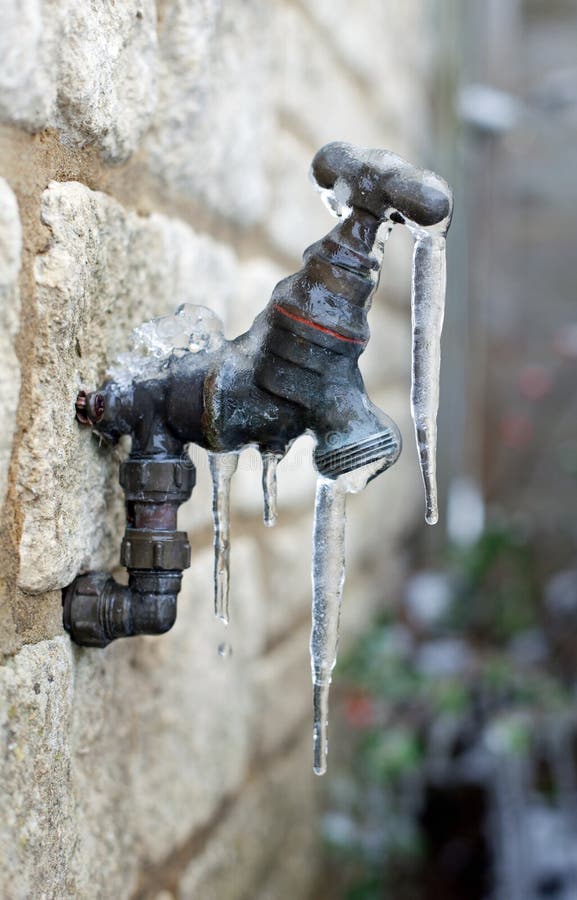Preventing Frozen Pipes in Cold Weather: Pro Advice
Preventing Frozen Pipes in Cold Weather: Pro Advice
Blog Article
Are you trying to locate guidance concerning How To Avoid Freezing Pipes?

Cold weather can wreak havoc on your plumbing, specifically by freezing pipelines. Right here's just how to prevent it from happening and what to do if it does.
Introduction
As temperatures drop, the danger of frozen pipes increases, potentially causing pricey fixings and water damages. Comprehending exactly how to prevent frozen pipes is essential for house owners in cool environments.
Prevention Tips
Protecting prone pipelines
Wrap pipes in insulation sleeves or use heat tape to shield them from freezing temperatures. Concentrate on pipes in unheated or outside locations of the home.
Home heating techniques
Maintain indoor rooms sufficiently heated, especially locations with pipes. Open up cabinet doors to allow cozy air to circulate around pipes under sinks.
Exactly how to recognize frozen pipelines
Seek decreased water flow from faucets, uncommon odors or noises from pipelines, and visible frost on subjected pipelines.
Long-Term Solutions
Structural modifications
Consider rerouting pipelines far from outside wall surfaces or unheated locations. Include extra insulation to attic rooms, cellars, and crawl spaces.
Upgrading insulation
Invest in top notch insulation for pipelines, attics, and wall surfaces. Appropriate insulation aids preserve regular temperatures and lowers the threat of frozen pipelines.
Shielding Outside Pipes
Garden tubes and outdoor taps
Separate and drain garden tubes prior to wintertime. Install frost-proof faucets or cover exterior taps with shielded caps.
Comprehending Frozen Pipelines
What triggers pipes to freeze?
Pipelines freeze when exposed to temperatures listed below 32 ° F (0 ° C) for expanded periods. As water inside the pipes freezes, it expands, putting pressure on the pipe wall surfaces and possibly triggering them to break.
Threats and problems
Frozen pipelines can cause supply of water disruptions, building damages, and expensive repair work. Ruptured pipelines can flooding homes and create extensive architectural damages.
Signs of Frozen Water Lines
Identifying frozen pipelines early can avoid them from bursting.
What to Do If Your Pipelines Freeze
Immediate actions to take
If you suspect frozen pipelines, keep faucets available to alleviate stress as the ice thaws. Utilize a hairdryer or towels taken in warm water to thaw pipes gradually.
Verdict
Preventing icy pipes requires aggressive actions and quick reactions. By understanding the reasons, indicators, and preventive measures, property owners can shield their pipes throughout winter.
6 Proven Ways to Prevent Frozen Pipes and Protect Your Home
Disconnect and Drain Garden Hoses
Before winter arrives, start by disconnecting your garden hoses and draining any remaining water. Close the shut-off valves that supply outdoor hose bibs and leave the outdoor faucet open to allow any residual water to drain. For extra protection, consider using faucet covers throughout the colder months. It’s also important to drain water from any sprinkler supply lines following the manufacturer’s directions.
Insulate Exposed Pipes
Insulating your pipes is an effective way to prevent freezing. Pipe insulation is readily available at home improvement stores and is relatively inexpensive. Pay close attention to pipes in unheated areas such as the attic, basement, crawl spaces, or garage. Apply foam insulation generously to create a buffer against the cold. You can also wrap your pipes in heat tape or thermostat-controlled heat cables for added warmth.
Seal Air Leaks
Inspect your home for any cracks or openings that could let in cold air. Seal any holes around the piping in interior or exterior walls, as well as the sill plates where your home rests on its foundation. Additionally, make sure to keep your garage door closed unless you’re entering or exiting. Leaving it open creates a significant air leak that can lead to frozen pipes.
Allow Warm Air Circulation
During cold snaps, it’s essential to allow warm air to circulate evenly throughout your home. Leave interior doors ajar to promote better airflow. Open kitchen and bathroom cabinets to help distribute heat consistently around the rooms. If you have small children or pets, be sure to remove any household chemicals or potentially harmful cleaners from open cabinets for safety.
Let Faucets Drip
A small trickle of water can make a big difference in preventing ice formation inside your pipes. When temperatures drop significantly, start a drip of water from all faucets served by exposed pipes. This continuous flow helps prevent the water from freezing. Additionally, running a few faucets slightly can relieve pressure inside the pipes, reducing the chances of a rupture if the water inside does freeze.
https://choateshvac.com/6-proven-ways-to-prevent-frozen-pipes-and-protect-your-home/

Do you really like reading about How to Prevent Your Pipes From Freezing? Make a review down below. We'd be pleased to listen to your opinions about this piece. Hoping that you come back again in the near future. Remember to take the opportunity to share this blog posting if you appreciated it. Bless you for being here. Come back soon.
Click Here Report this page